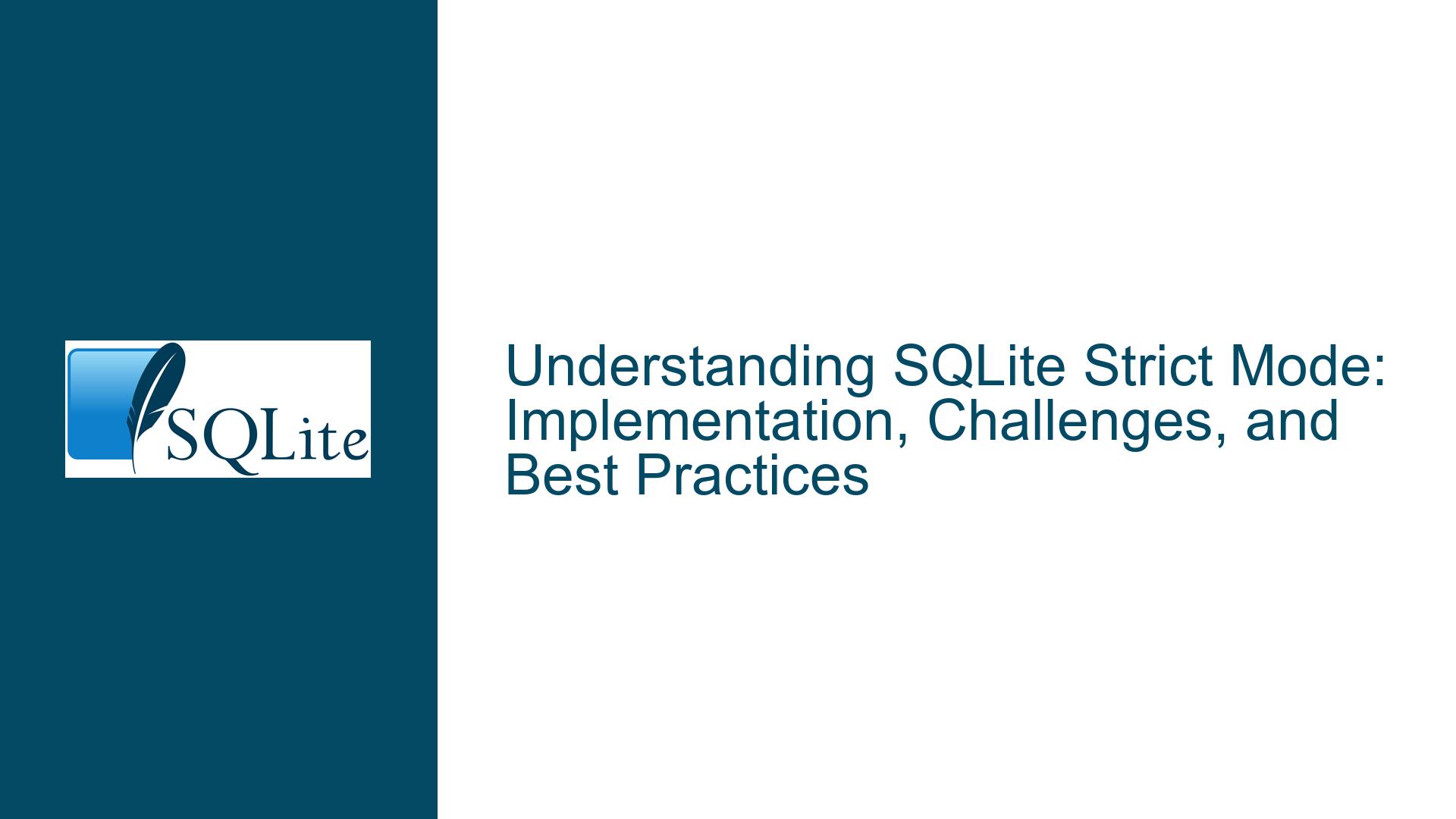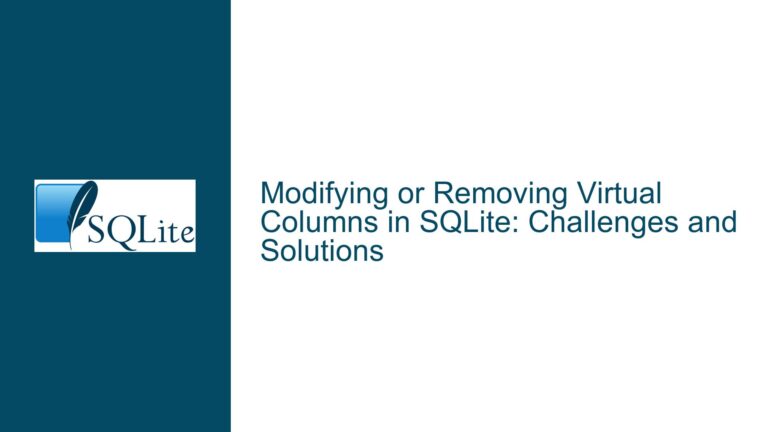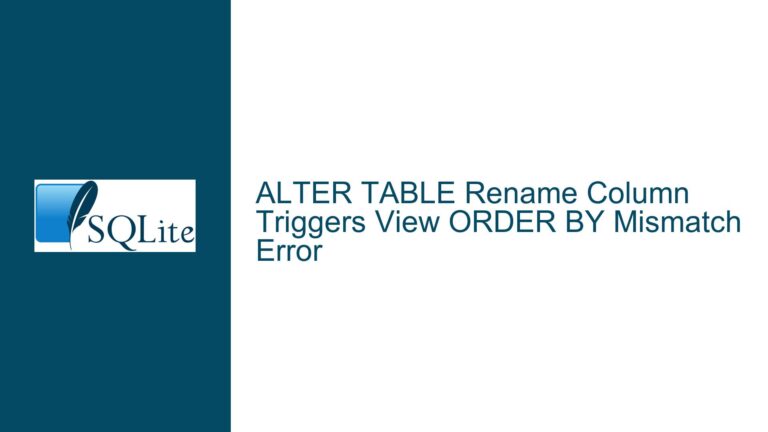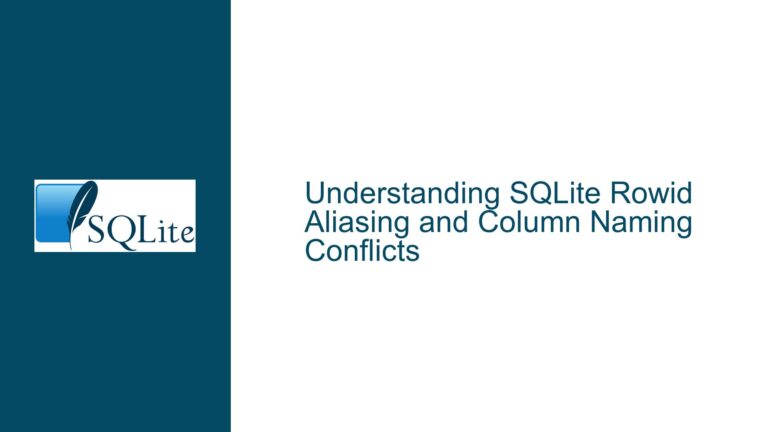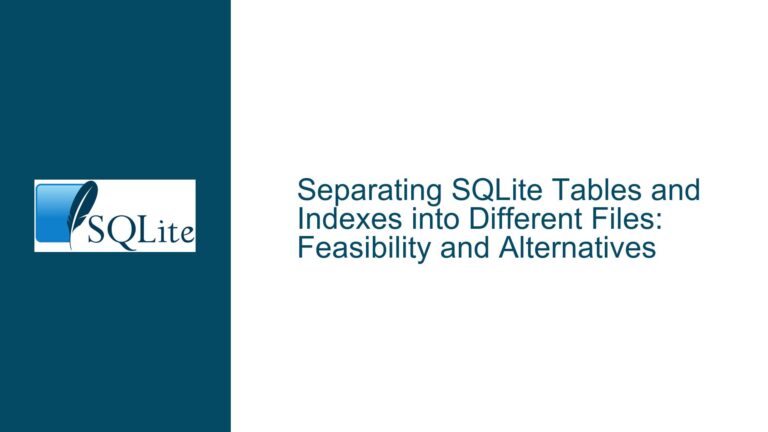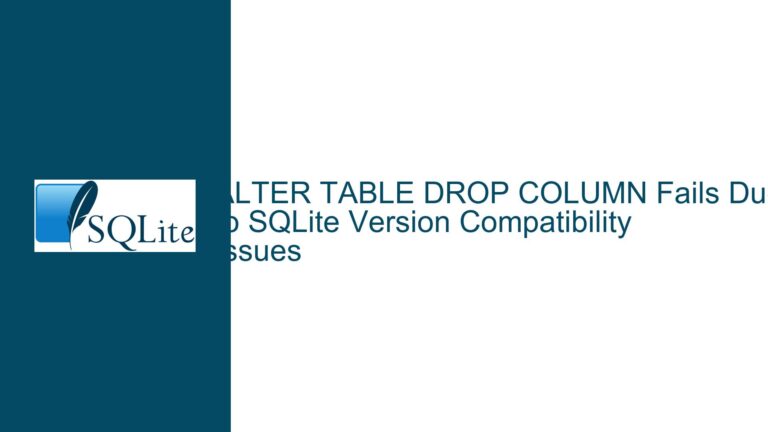SQLite Strict Mode: Implementation, Challenges, and Best Practices
The Role of Strict Mode in SQLite Table Definitions and Data Integrity
SQLite’s introduction of strict mode represents a significant shift in how data integrity and type enforcement are handled within the database. Strict mode enforces authoritarian type-checking when inserting new content into tables, restricts column data type names in CREATE TABLE statements to a predefined set (INT, INTEGER, REAL, BLOB, TEXT), and requires that all fields of a PRIMARY KEY be NOT NULL. This ensures that the database adheres to stricter standards, reducing the likelihood of data corruption and improving overall data quality.
However, the implementation of strict mode raises several important considerations. One of the primary challenges is how to handle existing databases that were created without strict mode. These databases may contain a variety of inconsistencies, such as missing keys, incorrect quotes in table definitions and triggers, NULL primary key values, and other issues. When a new programmer takes over such a project and attempts to enable strict mode, the database must be thoroughly checked for compliance. This process can be time-consuming, potentially taking minutes or even hours, depending on the size and complexity of the database.
Moreover, the question of whether strict mode should be stored in each database file or set as each connection is opened adds another layer of complexity. If strict mode is stored in the database file, converting an existing database to strict mode would require a VACUUM operation, during which the database would be checked for compliance. This approach ensures that the database is thoroughly vetted before strict mode is enabled, but it also means that the process of enabling strict mode becomes more cumbersome.
The Conundrum of Enabling Strict Mode via PRAGMA vs. Table Definitions
The discussion around enabling strict mode via a PRAGMA statement versus embedding it directly in the table definition highlights a fundamental tension between flexibility and consistency. A PRAGMA statement, such as PRAGMA strict=ON, offers several advantages. It allows users to enable strict mode for every table in a database without modifying existing tables, making it easier to adopt strict mode across multiple databases. Additionally, it avoids the need to alter the CREATE TABLE syntax, which can simplify the process of importing SQL dumps and ensure compatibility with standard SQL.
However, using a PRAGMA statement to enable strict mode also presents challenges. For instance, if strict mode is enabled after a table has been created, SQLite must determine how to handle columns with unrecognized data types. Consider the following example:
CREATE TABLE t1(a DATE, b JSON);
PRAGMA strict=ON;
INSERT INTO t1 VALUES(a,b) VALUES(?1,?2);
In this scenario, SQLite does not recognize the data types DATE and JSON. If strict mode is enabled, should SQLite treat these columns as having an "ANY" data type, allowing any value to be inserted? Or should it enforce stricter rules, potentially causing errors if the data types are misspelled or unsupported? This conundrum underscores the complexity of implementing strict mode via a PRAGMA statement, as it requires SQLite to make decisions about how to handle existing schema definitions that may not align with strict mode’s requirements.
Best Practices for Implementing and Managing Strict Mode in SQLite
Given the challenges associated with strict mode, it is essential to adopt best practices for its implementation and management. One approach is to perform a thorough integrity check before enabling strict mode. This ensures that the database is free of inconsistencies that could cause issues when strict mode is enabled. The integrity check could be performed as part of a VACUUM operation, which would also allow SQLite to return syntax errors and other issues that need to be addressed before strict mode can be enabled.
Another best practice is to carefully consider the granularity at which strict mode is applied. While strict mode can be enabled at the table level, it may also be beneficial to allow for more granular control, such as enabling strict mode for individual columns or connections. This would provide greater flexibility, allowing users to apply strict mode only where it is needed while maintaining compatibility with existing databases and applications.
Finally, it is important to recognize that strict mode represents a paradigm shift in how SQLite handles data integrity. As such, it is crucial to approach the adoption of strict mode with caution, ensuring that all potential issues are thoroughly vetted before enabling it in a production environment. This may involve testing strict mode in a development or staging environment, where any issues can be identified and addressed before strict mode is rolled out to production databases.
In conclusion, SQLite’s strict mode offers significant benefits in terms of data integrity and type enforcement, but it also presents several challenges that must be carefully managed. By adopting best practices for implementing and managing strict mode, users can ensure that their databases remain consistent, reliable, and free of errors, even as they transition to a stricter data management paradigm.
